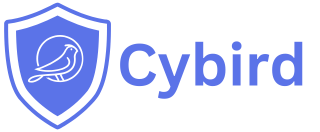Navigating the internet safely is crucial in our digital age, especially as cyber threats like phishing, malware, and data breaches continue to escalate. A question I often receive through various channels—chat, social media, emails, and more—is: “How can I tell if a website is safe to visit?” This indicates it’s a common concern among many internet users. To address this, here’s an expanded guide featuring practical tools and tips to help ensure your online safety.
“Phishing is a major challenge because it preys on human vulnerability.”
Kevin Mitnick
1. Understand the Importance of URL Structure
Start by examining the URL of the website:
- Secure Protocol: Always check that the URL begins with “https://”—the ‘s’ stands for secure, which means the site uses encryption to protect your data.
- Domain Name: Be cautious of sites with strange domain names or ones that mimic well-known brands with subtle typos or additional characters.
Here are some examples to illustrate the importance of scrutinizing domain names for potential security risks:
- Typo-squatting: This involves creating domain names that have small typographical errors compared to legitimate sites. For instance, a malicious website might use amaz0n.com instead of amazon.com, exploiting users who mistakenly type the wrong URL.
- Combosquatting: Here, the scam involves adding additional words or letters to a well-known domain name. An example could be facebooklogin.com or googlepaymentservice.com, which might be used to deceive users into thinking they’re visiting a legitimate part of the larger site.
- Homograph Attacks: These attacks use characters from different scripts that look similar to those in English to create deceptive URLs. An example could be using Cyrillic characters that resemble Latin letters, such as replacing the letter ‘a’ in apple.com with the Cyrillic ‘а’, resulting in a visually similar yet different URL.
- Subdomain Deception: Scammers sometimes use subdomains to make their websites appear affiliated with a reputable site. An example might be apple.promotions.com, where users might think this is an official Apple site due to the placement of “apple” at the beginning of the domain.
- Misspellings: Simple misspellings in domain names can also trick users. An example is googel.com or bnakofamerica.com. These sites prey on quick typos made by users not paying close attention.
Each of these tactics is designed to trick internet users into believing they are visiting legitimate websites, potentially leading them to download malware, provide personal information, or engage in unsafe online transactions.

2. Leverage Your Browser’s Built-in Security
Use the security features of your browser effectively:
- Google Chrome’s Safe Browsing: Chrome warns you if you’re about to visit a suspected phishing or malware-infected website. It uses Google’s regularly updated list of unsafe web resources to provide these warnings, helping you avoid malicious sites.
3. Employ Third-Party Tools Like VirusTotal
VirusTotal is a free service that analyzes URLs and files to detect malware, sharing the results with the security community:
- Scan URLs: You can pre-emptively check the safety of a website by scanning its URL on VirusTotal, which reports if the site has been flagged for suspicious activities or malware.
- VirusTotal is a tool from Google: https://virustotal.com
4. Invest in Comprehensive Security with Cybird
For those who need robust, user-friendly protection, Cybird offers an excellent solution:
- Real-time Threat Detection: Cybird monitors and blocks potential threats in real time, keeping your online activities safe without the need for constant updates. It provides zero-day protection against phishing with its PhishDefender technology, ensuring immediate defense against new threats as they emerge.
- Advanced Privacy Features: Cybird protects your online privacy by blocking ads and trackers that could compromise your personal information. This helps maintain your anonymity and reduce your digital footprint.
- PhishDefender Technology: This cutting-edge feature uses over 25 different parameters to analyze websites for suspicious activity. It is exceptionally effective at detecting all types of deceptive practices, including typo-squatting, comboquatting, homograph attacks, and sub-domain deception. By assessing these parameters, PhishDefender ensures that you are alerted to potential threats before any harm can occur, providing a more secure browsing experience.
- Cloud-based Efficiency: Being cloud-first, Cybird does not slow down your device, ensuring seamless and effective protection. This allows you to enjoy a smooth online experience without the lag often associated with traditional security software.
By choosing Cybird, you not only ensure robust security but also benefit from advanced technologies designed to protect against sophisticated cyber threats. This makes Cybird an indispensable tool for anyone looking to enhance their online security and privacy.
5. Enhance Your Browsing with Safe Habits
Adopting safe browsing habits is as crucial as using technical tools:
- Scrutinize Too-Good-to-Be-True Offers: Be wary of scams that lure users with seemingly incredible offers.
- Verify Trust Seals: Check for trust seals on websites, like BBB Accredited Business or TrustedSite, and verify their authenticity by clicking on them.
6. Consult User Reviews and Feedback
Gain insights into a website’s credibility by reading user reviews:
- Use Trusted Review Platforms: Websites like Trustpilot and Sitejabber can provide valuable feedback from other users about the credibility and reliability of a site.
Engaging with Your Experiences
To make this discussion more interactive and helpful, I encourage you to share your own experiences with suspicious websites or cybersecurity issues in the comments below. Have you ever encountered a phishing attempt? How did you deal with it? Your stories can help others learn and stay safe online.
Conclusion
By understanding how to check if a website is safe and implementing these strategies, you can navigate the web more securely. Tools like Google Chrome, VirusTotal, and Cybird, combined with vigilant browsing practices, are your best defense against the myriad of online threats. Stay safe and browse with confidence!
Additional Resources:
- StaySafeOnline (Powered by National Cyber Security Alliance)
- Website: StaySafeOnline
- Provides tips and resources for ensuring online safety, protecting personal information, and managing business security risks.
- Cybersecurity & Infrastructure Security Agency (CISA)
- Website: CISA
- Offers a wide range of resources for individuals and businesses, including guides on protecting against cyber threats and vulnerabilities.
- Federal Trade Commission (FTC) – Consumer Information on Privacy, Identity & Online Security
- Website: FTC Consumer Information
- Features practical advice on keeping your information secure, dealing with identity theft, and understanding privacy policies.
- Electronic Frontier Foundation (EFF) – Surveillance Self-Defense
- Website: Surveillance Self-Defense
- EFF’s guide to defending yourself and your friends from surveillance by using secure technology and developing careful practices.
- SANS Internet Storm Center
- Website: SANS ISC
- Offers daily diaries discussing the latest cybersecurity threats and new protective measures.
- Krebs on Security
- Blog: Krebs on Security
- Run by journalist Brian Krebs, this blog delves deep into various aspects of cybersecurity, including the latest threats, security updates, and detailed investigations.
- PhishTank
- Website: PhishTank
- A collaborative clearing house for data and information about phishing on the Internet. It allows users to submit, verify, track and share phishing data.
- Google Safe Browsing
- Website: Google Transparency Report
- Google’s tool to check if a website is considered safe. It provides reports on potentially unsafe websites flagged for malware or phishing.

Founder & CEO of Cybird. Cybersecurity expert for families.

